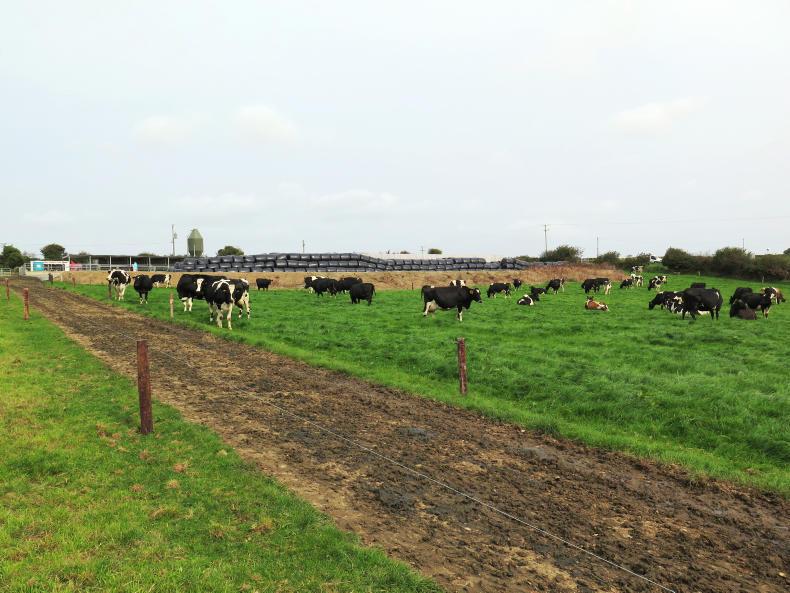The last 10 days or so have seen a decline in grass growth rates.
Autumn has closed in, nights are longer and colder and heavy rain up to recently reduced growth rates further.
Three weeks ago, it looked like many farms would struggle to get through all the grass they were growing, but much of this grass has disappeared since then.
Heavy rain and mediocre to poor grazing conditions reduced utilisation and covers dropped quicker than expected on many farms.
That said, grass quality is holding up well, with samples taken last week showing crude protein still over 20% and metabolisable energy over 11.7MJ/kg.
Quality will slip a bit going into October as grass covers should be at peak, meaning pre-grazing yields should be around 2,200kg/ha.
Grazing these kinds of covers is a necessary evil. Ideally, you wouldn’t have to graze high covers but if you don’t then you won’t have grass in three weeks’ time.
Meal
Even where there is sufficient grass on farms, feeding a small bit of meal at this time of year is probably no harm to keep cows content and avoid a big drop in milk yield when wading through high grass covers.
How much to feed depends on grass quality and quantity but ideally no more than 2kg of meal should be fed unless grass is very tight or the stocking rate is very high.
When buying meal, low-protein nuts or coarse ration are more than sufficient as grass quality is still good.
Feeding 1kg or 2kg of meal at a crude protein of 12 to 14% is good enough for the time being. Remember, too much protein in the diet is not good.
Read more
Dairy management notes: animal health
Dairy management notes: cull cows
The last 10 days or so have seen a decline in grass growth rates.
Autumn has closed in, nights are longer and colder and heavy rain up to recently reduced growth rates further.
Three weeks ago, it looked like many farms would struggle to get through all the grass they were growing, but much of this grass has disappeared since then.
Heavy rain and mediocre to poor grazing conditions reduced utilisation and covers dropped quicker than expected on many farms.
That said, grass quality is holding up well, with samples taken last week showing crude protein still over 20% and metabolisable energy over 11.7MJ/kg.
Quality will slip a bit going into October as grass covers should be at peak, meaning pre-grazing yields should be around 2,200kg/ha.
Grazing these kinds of covers is a necessary evil. Ideally, you wouldn’t have to graze high covers but if you don’t then you won’t have grass in three weeks’ time.
Meal
Even where there is sufficient grass on farms, feeding a small bit of meal at this time of year is probably no harm to keep cows content and avoid a big drop in milk yield when wading through high grass covers.
How much to feed depends on grass quality and quantity but ideally no more than 2kg of meal should be fed unless grass is very tight or the stocking rate is very high.
When buying meal, low-protein nuts or coarse ration are more than sufficient as grass quality is still good.
Feeding 1kg or 2kg of meal at a crude protein of 12 to 14% is good enough for the time being. Remember, too much protein in the diet is not good.
Read more
Dairy management notes: animal health
Dairy management notes: cull cows






 This is a subscriber-only article
This is a subscriber-only article










SHARING OPTIONS: